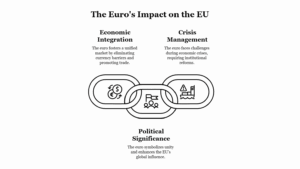Regional disparities in human development refer to the unequal distribution of economic, social, and political resources and opportunities across different regions of a country, leading to variations in the overall quality of life, access to education, healthcare, employment, and infrastructure. These disparities are a significant challenge in many countries, including India, where development outcomes often vary greatly between states and regions.
- Economic Disparities: India’s economic growth has been uneven across its regions, with states like Maharashtra, Gujarat, and Tamil Nadu experiencing higher levels of industrialization, urbanization, and infrastructure development. In contrast, states such as Bihar, Uttar Pradesh, and Odisha have lagged in terms of per capita income, industrial development, and employment opportunities. This has led to significant economic disparities within the country, with more prosperous states attracting greater investment and offering better economic opportunities, while poorer states struggle with high poverty rates, limited job creation, and low agricultural productivity.
- Social Disparities: Regional disparities also manifest in social indicators such as literacy rates, life expectancy, and access to basic services like healthcare and sanitation. For example, Kerala and Tamil Nadu have high literacy rates and well-developed healthcare systems, while states like Bihar and Madhya Pradesh face challenges related to high illiteracy rates, inadequate healthcare infrastructure, and poor nutritional outcomes. The lack of access to quality education and healthcare in underdeveloped regions perpetuates cycles of poverty and social exclusion.
- Political Disparities: Regional disparities are often linked to political factors, including the effectiveness of governance, the allocation of resources, and the level of political stability. States with better governance structures and political stability tend to have more effective implementation of development programs and policies. In contrast, politically unstable regions or those with poor governance may face difficulties in addressing local development issues. For instance, the Naxalite (Maoist) insurgency in certain tribal and rural regions of Chhattisgarh, Jharkhand, and Madhya Pradesh is a reflection of the deep-rooted economic and social inequalities that these areas face.
- Geographical Factors: Geography plays an important role in shaping regional disparities. Hilly and remote areas often face additional challenges in terms of accessibility, infrastructure, and communication, which can hinder development. States in the Northeast or Himalayan regions of India, for example, struggle with infrastructural bottlenecks, poor connectivity, and isolation from the rest of the country, making it difficult to achieve broad-based economic growth and social progress.
- Government Efforts to Reduce Disparities: The Indian government has implemented various policies aimed at reducing regional disparities, such as the Backward Regions Grant Fund (BRGF), which focuses on infrastructure and social development in lagging regions, and the National Rural Employment Guarantee Scheme (MGNREGA), which provides employment opportunities in rural areas. Additionally, several states have implemented their own regional development programs. However, despite these efforts, significant disparities persist, largely due to historical, social, and political factors that continue to influence development outcomes.
Conclusion: Regional disparities in human development are a significant challenge for India. Addressing these disparities requires a multi-faceted approach, including targeted investment in education, healthcare, and infrastructure in backward regions, as well as policies aimed at promoting equitable economic growth. Reducing these disparities is crucial for fostering social cohesion, ensuring that all citizens have equal access to opportunities, and achieving sustainable and inclusive development.







Leave a Reply